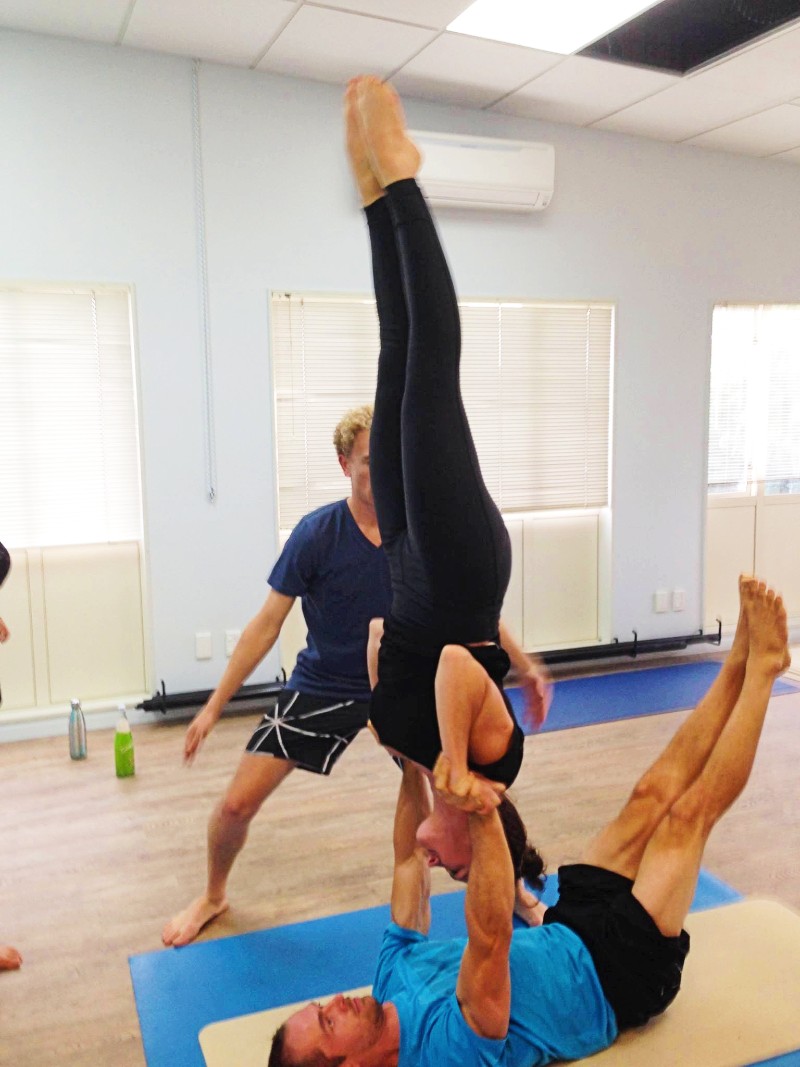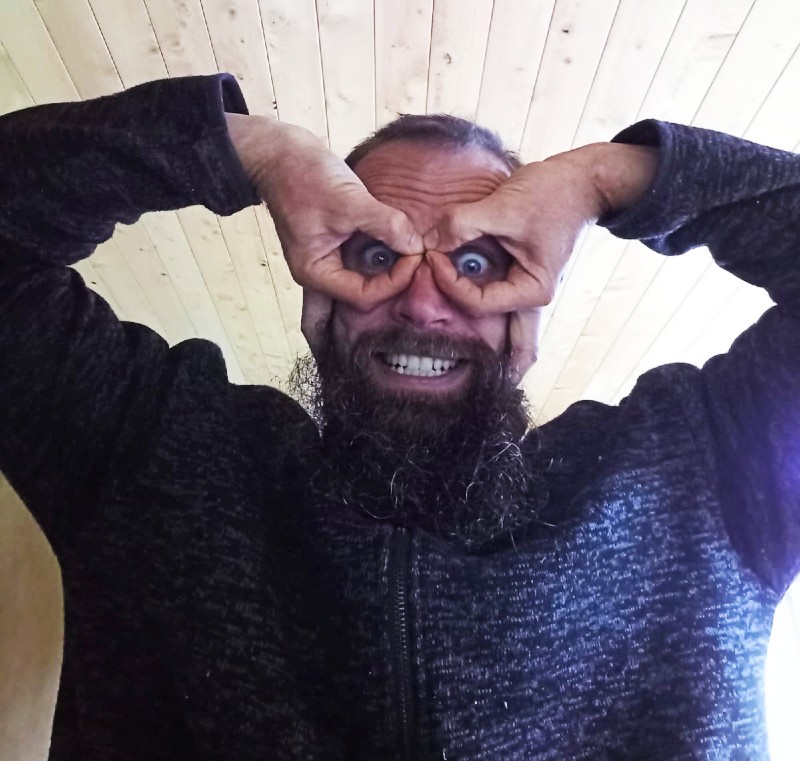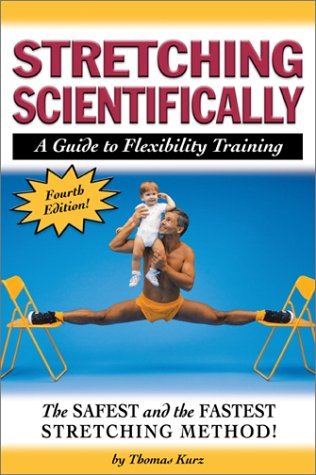How to improve your flexibility without stretching
I practiced Yoga for nearly 10 years with the intent of improving my flexibility. I believe that over this time my flexibility did increase. But not necesarily because of the amount of stretching that I did. I have come to a different understanding about flexibility now which I think more accurately describes how it actually works. I think that having this understanding allows me to improve my flexibility faster. It also allows me to stay more flexible without anywhere near the amount of maintenance that would be required with stretching my muscles.
If you're interested in improving your flexibility then read on! I'll share some things here which I have barely heard people speak about before. It certainly isn't common knowledge - but it should be!
Some Key Moments That Challenged my Assumptions about flexibility
During the time I was practicing Yoga I had a few experiences which completely surprised me and made me question what I was doing. They made me challenge the assumption that if you want to be more flexible then you should stretch your muscles.
Key moment #1
As you may know already, I have a background in martial arts. During preparation for one of my gradings I was practicing a movement sequence known as the dragon form. It involved a lot of movements which were in a deep lunge position. It also required me to powerfully push out from this position into a standing position. After several days of practicing in this way I went to a yoga class and noticed that the flexibility of my hamstrings had improved radically. Like FARRRR beyond what I'd ever experienced before with just stretching.
Key moment #2
I have completed a 10 day vipassana silent meditation retreat. If you haven't heard about it, it involves something like 8 hours or more of sitting meditation each day for 10 days in a row. I broke the rules near the end and did a bit of stretching in my room. I was astonished. My body was so loose and supple. Like total rubber-man. I couldn't believe it. I had been sitting on my ass for 10 days and my flexibility had improved more than years worth of stretching had accomplished. It didn't stay this way, but it was enough to give me a brain-spasm.
Key moment #3
I have done a bit of acroyoga practice too. If you don't know what it is, just think of acrobatics and yoga jammed together. Here's a picture of me and my ex-wife doing some together years ago. Acro-lingo goes like this... A base is the person who is on the bottom and supports the weight of the person on top. The person on top is known as a flyer. What I noticed was that being a base also had the power to rapidly improve the flexibility of my hamstrings - no stretching!

I have a number of other experiences which broke my model of how flexibility works too. But I think those are enough to make the point that improving flexibility is not necessarily just about stretching.
My new understanding of flexibility
When I was doing my feldenkrais training I was introduced to the idea of the body being like an air conditioning system. I'm a trained mechanical engineer so this way of thinking appealed to my geeky self. Hopefully you enjoy indulging in a bit of nerdyness too...
Put simply, an AC system has 3 parts.
- A controller.
- A heater/cooler.
- A temperature sensor.
The controller is what decides the temperature a room is going to be. This is called a set point. Its job is to listen to the feedback from the sensor and to tell the heater/cooler to turn on depending on if there needs to be an adjustment to the room temperature.
If the controller has a set point of 20 degrees C and the sensor is reading 16 degrees then the controller decide that it's time to turn on the heater. The heater switches on and the room heats up. Once the room is at 20 degree's the sensor tells the controller and the controller switches off the heater.
Same deal if the temperature is too high. The cooler gets turned on until the temperature is back around 20 again.
You enjoying this as much as I am?
So anyway, how does this relate to the body? Well think of it like this...
- The nervous system is equivalent to the controller. It makes the decisions.
- The heater/cooler is equivalent to the lengthening or shortening of the muscles.
- The sensor is equivalent to the sensors we have in our muscles which determine muscle length.
So lets translate that to an example.

Much like the controller which is aiming to get to 20 degrees C, our nervous systems also have a specific muscle length set point. That is they are always aiming to keep our muscles within a certain range of what's normal.
If the nervous system gets feedback from the muscle sensors that the muscle is too short, then it will send instructions to lengthen them.
If it gets feedback from the sensors about the muscles being too long, then it sends instructions to shorten them.
Stretching is equivalent to simply increasing the length of the muscle. Our nervous system then gets to work bringing the length of the muscle back into a range of what is normal.
It's almost like bringing a bucket of ice into a room with the air conditioning on. It lowers the temperature temporarily and then the controller gets to work bringing it back into the range of what is normal.
This is why stretching (in my experience) doesn't result in permanent changes in flexibility.
So how can we improve our flexibility then?
Well for the sake of argument, lets take this new way of thinking about our body as the frame for now.
It makes sense that to increase the length of the muscles you need to somehow convince the nervous system to change it's set point. Anything other than that is going to result in fighting against it.
And why fight yourself?! It's like a brain trying to outsmart itself... doesn't really work!
Based on those "key experiences" I share above and some other learning I've done I have some ideas about how to do this.
I believe that in order to change your flexibility set point it has something to do with the following things. Probably others too.
Safety
Our nervous system sets the length of the muscles for safety reasons. If the muscles lengthen too much then it puts your joints at risk of damage. It's a BAD situation. The nervous system will do whatever it takes to keep your body safe.
Function
We spend our lives doing fairly repetitive movements. Our movements are largely run by habits. Our nervous systems create muscle length set points which will allow us to do the things that we habitually do. This is why if I sit on my ass in front of a computer 8 hours a day (I don't mean in meditation!) then my nervous system decides that for functional purposes my hamstrings are not required to be very long at all. If I am required to be an acro-yogi base then my nervous system decides the length of my hamstrings needs to be greater.
Strength and Coordination
This one relates to safety. The stronger my muscles are the less danger there is of them being lengthened too much. Thomas Kurz's book on flexibility is based on this idea. He focusses on strength training in order to allow him to do stuff like this...

Self image
We have conceptual images of ourselves and what our bodies are like. These determine the way that we move and the length of our muscles. Consider what it's like to think of your body as though your head was a hot air balloon lifting your spine vs if you think of your spine having to carry the weight of a bowling ball at the top of that long stack of vertebrae. Try it, it creates a different experience of being in your body. This point is likely something to do with why the meditation retreat changed my flexibility. I was deep in sensing mode which influences self-image.
Other factors
Brains are complex. It's likely that there's many different factors influencing your flexibility in any given moment. How does sleep affect your flexibility? How about dehydration? What about having relationship difficulties with loved ones? Menstrual cycles?
The practical actions of how to improve flexibility
Given that there's all those factors influencing flexibility, it makes a lot of sense why Feldenkrais lessons are so good for improving flexibility. Feldenkrais creates safety, lowers the excitement in the nervous system, upgrades the self image, builds functional movement patterns, integrates the whole self (which improves function and safety), grows coordination + more. This all gives the nervous system the idea that longer muscles are safe and useful and worthwhile. So that's what it does. It lengthens.
In my experience of doing feldenkrais ATM lessons I have noticed that my muscles can become much longer within the space of an hour or so. I like to think that my brain has learned something (permanently) and this creates greater coordination/awareness/safety etc. These types of improvements stay with me. They are there for good. As long as I make use of the new patterns I have learned in my day to day life, my brain realises that it's useful to keep that flexibility. It has purpose!
I also find that it's useful to embed these patterns by using them in my movement practices. I do things like dance, rock climbing and parkour on a regular basis in order to keep my body functioning well. These also have the added benefit of building strength and other functional movement patterns.
If you're interested in using feldenkrais to improve your flexibility get in touch and we can sort something out.